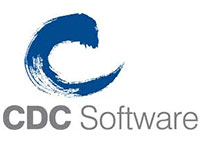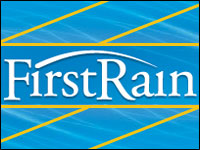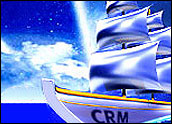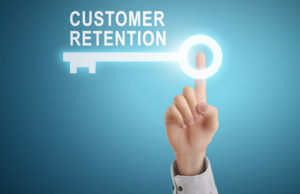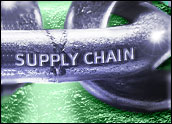
This story was originally published on Oct. 19, 2009, and is brought to you today as part of our Best of ECT News series.
You might say that supply chain management has entered the philosophical realm. SCM investment has flatlined to a large extent, and the market’s focus has changed as supply chain headaches become more complex and cut a broader swath.
Given that SCM covers everything from procurement and production to distribution and logistics, the numbers can vary depending on how you slice it. Overall, SCM is showing little to no growth, according to IDC, with less than 2 percent for all software categories (not including SaaS).
These SCM numbers encompass three categories: logistics, production planning and inventory.
“Those are the big categories to look at,” Michael Fauscette, group vice president of software business solutions for IDC, told CRM Buyer.
“Out of these, logistics is probably the one that’s been more interesting,” he said, “because it is showing the highest growth by far at 3 percent. That’s probably because of the fuel crisis.”
Production planning is the least interesting this year, showing barely 1 percent growth, added Fauscette.
“It may even be slightly down by the end of the year,” he said, “but that makes sense, since the manufacturing sector has been hurt really badly.”
Inventory management has held steady, although North America and Asia drove the numbers down. There was reasonable spend in Europe at 12 percent growth, however, although that was down from last year’s 17 percent number.
Despite the slow numbers, there are still opportunities to take costs out of SCM, Fauscette added.
Although SaaS uptake is slow, he noted, “we will see more as businesses look for systems to squeeze costs out of shipping and planning. These are easy areas to shift to SaaS.”
Managing Many Chains
The days of buying SCM packages and hiring integrators to do the rest may be on the wane as enterprises pay closer scrutiny to their long-term costs.
Although there is no one compelling trend in the SCM space, the industry is reaching the point where cost optimization and fulfillment are becoming top priorities, observed Andrew White, research vice president for business applications and process at Gartner.
“Until now, anything beyond a six-month payout and there was every chance the project would be delayed,” he said. “Now, companies are looking for strategies for growth, and getting into multi-enterprise forecasting and optimization tools.”
The job is that much harder, given the overall changes in the SCM landscape, noted Mark Woodward, president and CEO of E2open.
“Some things haven’t changed that much from a year ago, but we are seeing the continuing globalization of the supply chain and outsourced manufacturing, which means having to manage multiple supply chain tiers,” he told CRM Buyer.
“Vertical industries had a line of sight to supply,” said Woodward. “Now, with multi-tier outsourced manufacturing, you have to manage multiple supply chains — and that is a trend that will continue to accelerate.”
Monitoring Many Networks
Adapting to this new landscape means having to think well outside the traditional enterprise box when planning SCM investments.
“Whereas most supply chain software has had an inside-out focus — i.e., optimizing the enterprise first and focusing on the buy side — companies now realize they are losing visibility into the processes beyond their four walls and the sell side of things,” noted Narayanan (Nari) Viswanathan, vice president and principal analyst with the Aberdeen Group.
“The evolution of supply chain today should include five networks: enterprise, demand, supply, logistics and financial,” he continued. “The supply chain has become very elongated, especially if you are getting goods from China, for example. Organizations need to take a fundamentally different approach, because that elongation in the supply chain is happening on both the buy and the sell side.”
The most recent downturn has definitely turned the spotlight on demand-side exposure, added E2open’s Woodward.
“When we talk about solving supply chain problems, we think in terms of classic issues, such as where parts and components come from,” he said. “Now, there is a greater need for visibility on the finished-goods side. If you can gain insight into product demand, you can eliminate the need to buffer inventory and overstock your channel.”
Gauging Greenness
Beyond the networking challenges and opportunities, sustainability is also likely to be one of the biggest issues for supply chain management moving forward.
Environment-related tax credits and regulation of carbon emissions are emerging as “big concerns that demand analytics capabilities and visibility into processes,” Aberdeen’s Viswanathan said.
“Customers are ready to spend dollars on sustainable supply chain practices,” added Woodward. “In the past year, there has been a lot of conversation but a lack of commitment. Now we’re seeing what we expected as companies like GE and Wal-Mart demand specific reporting requirements.”
To understand its carbon footprint, a company has to start with measuring and managing all aspects of its supply chain — from component production and warehousing to distribution and delivery to the end-user.
“Having that level of ability to consolidate information on purchasing products and various divisions in different locations is integral to understanding your carbon footprint,” said Woodward.
SaaS 2.0: Visibility, Variability, Velocity
The “federated network,” or “SaaS 2.0,” is the way of the future for SCM, predicted Art Mesher, CEO of The Descartes Systems Group.
“The first iteration in SCM was the distribution view. The second was the logistics view. Now, it’s a supply chain view that encompasses what we call the ‘3 Vs’: visibility, variability and velocity,” Mesher told CRM Buyer.
“In other words, the new framework for the supply chain is expanding from manufacturing and delivery to the idea of managing all resources in motion — including back office systems, GPS tracking, documents and people,” he explained.
“Systems integrators made money with configurable systems in a ‘state of things untied,'” continued Mesher, “but you should be able to buy hardware, software and your network together in a ‘state of things united.'”
Getting to this level of efficiency, however, is very much contingent upon the ability to integrate real-time data collection throughout the supply chain.
“You need to have data collection at your source, real-time command and controls, and decision-support tools — that is, analytics and optimization,” Mesher said.
“Your network should be able to source data from GPS, ERP and other systems. All the threads need to run together in a single framework, and you need standardization across multiple partners,” he added. “It’s a new world that’s coming.”



